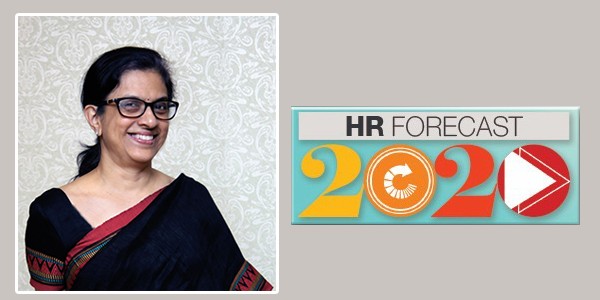Technology, data, employee experience: What’s high on agenda
In my view, employee experience will be higher on the agenda, with technology and data acting as powerful enablers for the same. Technology and data will help us understand our people better and drive how we seek inputs from employees on what they value. Further, they will help us carry out predictive analytics and design appropriate actions. Technology can empower our people, and thereby enhance their experience. Used well, these two dimensions can also work in an intelligent way to curate what is needed for each segment of the workforce.
The advances in technology are also helping develop ‘organic intelligence’ – technology helping advance human capability by aiding decision-making. This will be used to a large extent by managers to look at people experience. Approaches based on behavioural economics and ‘nudge’ will also be deployed. Technology that builds on the human psyche will help drive a powerful employee experience in the years ahead.
The biggest challenge for HR in your sector
For us, the challenge is to be a fit for the future organisation. Upskilling and building leaders to sustain our future are the top priorities for us. As a knowledge business, our priority is to work with our clients and help them manage their challenges and navigate their business through the disruptions happening at the workplace.
Our challenge will be to determine how to succeed in this endeavour. The ability to thrive in a changing environment, together with empathy and relationship skills, will be the key.
Building leaders will be critical at all levels – helping them see the bigger picture and purpose in what they do, and to quote John Kotter, “build the ability to drive useful change.”
We also need to find a good balance between ‘energy’ and ‘economics’ — managing the motivation and energy in the organisation even as we ensure we are economically efficient as an overall ecosystem. Transparent approaches to how talent gets deployed on different kinds of work, enabling the learning that is required to help talent succeed, and at the same time driving performance accountability and a meritocracy helps us manage that balance.
Internal equality and internal equity
Transparency, empowerment and giving more choice to employees will be of utmost importance. Equity is not about treating everyone the same, but about proportionality — rewards, career progression, learning commensurate to role and contribution, flexibility to try out new roles, and then enabling growth in the area of choice and at the pace desired by the employees. Our talent should be encouraged to make mindful choices in these aspects, without feeling that they are losing out. At the same time, fundamental and foundational aspects are applicable to everyone in the organisation — aspects such as benefits, wellness and values around respect.
Data deluge: More power to HR
Will rely on both—data and gut feel! Gut feel is based on accumulated experience and judgement and that is a finely-honed skill. At the same time, gut feel that is not backed by data is not credible and cannot be a basis for decision making. The approach I favour is to formulate a hypothesis or point of view, and then use data in a rigorous manner to prove or disprove it. Diving into data, without having a sense of what one is looking for, rarely yields any insight.
The two approaches to problem-solving can be deductive or inductive. Over time, and with accumulated experience, the latter is what most professionals will rely on. You need to formulate or think through possible reasons for an issue — say early attrition, low engagement, high offer dropout — that are mutually exclusive and collectively exhaustive. Bold and less probable alternatives are also good to explore — this can help bust some myths. For instance, some analytics we did helped bust the myth that the majority of women attrition at mid-levels was due to maternity, but the data showed this was not the case at all.
(This article first appeared in HRKatha print magazine)
Value our content... contribute towards our growth. Even a small contribution a month would be of great help for us.
Since eight years, we have been serving the industry through daily news and stories. Our content is free for all and we plan to keep it that way.
Support HRKatha. Pay Here (All it takes is a minute)




































